
Our MSc in High Performance Computing is taught by EPCC, a research institute within the University of Edinburgh.
EPCC is one of the leading centres of supercomputing expertise in Europe, and it manages an extensive collection of HPC systems including the UK’s national supercomputer ARCHER, a 72,000-processor Cray XC30 system. Our MSc students have access to supercomputer facility like ARCHER and use them extensively for practical exercises and project work.
High Performance Computing is widely used in science, engineering and industry. Many branches of modern science, such as climate research and nanotechnology, rely on complex computer models, which can only be run on parallel supercomputers.
Companies involved in areas such as aerospace and automotive engineering, oil exploration, drug design and genetic sequencing all run computer models on HPC systems. Furthermore, the parallel programming techniques that were once only applicable to specialist machines are now essential for any software developer who wants to take full advantage of modern multicore processors, graphics processors and computing clusters.
Virtual open days
If you are interested in applying for the MSc in HPC, the virtual open days are a great way to find out more about it.
Upcoming virtual open days in 2014
- Tuesday 11 March 13:00 – 14:00 GMT
- Tuesday 22 April 12:00 – 13:00 BST
- Tuesday 27 May 13:00 – 14:00 BST
These sessions are hosted by the Programme Director, Dr David Henty. Presentations are followed by a Question & Answer session. The presentations will cover an introduction of the MSc programme, course contents, career opportunities, scholarships, applying and other aspects of studying with us.
Registration
Register your place by emailing msc [at] epcc.ed.ac.uk with your name and the virtual open day session of your choice.
Scholarships
A number of scholarships are available for MSc in HPC applicants for academic year 2014/15. Please visit the MSc in HPC programme website for details.
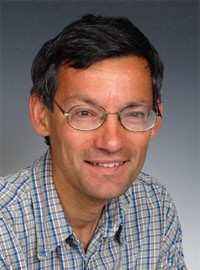
Prof. Graeme Ackland, of the School's Institute for Condensed Matter & Complex Systems, is to receive the Royal Society Wolfson Research Merit Award, which recognises outstanding scientists working in the UK.
Prof. Ackland's research is in applying quantum mechanics to the structure of materials. This requires not just being able to do quantum mechanics, but to be able to understand it well enough to extract the essential physics without calculating too many less relevant details.
The award recognises his work in making simplifying approximations to the quantum mechanical description of materials. This enables him, and other groups, to carry out simulations using millions of atoms, rather than the hundreds which are possible with the exact treatment. In most practical applications, the advantages of the full quantum treatment are negated by prosaic difficulties arising from finite size effects.The award recognises Prof. Ackland's definitive model for iron, applications in radiation damage, and supports future development of simple models for metal-oxide interfacial binding.
"This is a great honour. Well done, Graeme!"
Prof. Arthur Trew, Head of the School of Physics & Astronomy
This video gives a short summary of the research: http://www.nutshell-videos.ed.ac.uk/graeme-ackland-self-healing-materials/
About the Royal Society Wolfson Research Merit Award
This scheme is for outstanding scientists who would benefit from a five-year salary enhancement to help recruit them to or retain them in the UK. Sir Isaac Wolfson FRS (1897-1991) was a businessman who distributed most of his fortune to good causes. The scheme provides universities with additional support to enable them to recruit or retain respected scientists of outstanding achievement and potential to the UK. It provides a salary enhancement which is paid by the university in addition to the basic salary. The scheme covers all areas of the life and physical sciences, including engineering, but excluding clinical medicine. The scheme is jointly funded by the Wolfson Foundation and the Royal Society.
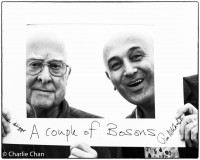
Prof. Peter Higgs was interviewed by Jim Al-Khalili on his way to Nobel Week in Stockholm. The resulting programme is the first in the new series of BBC Radio 4's “The Life Scientific”, which will be aired at 9am on BBC Radio 4 on 18th February, 2014.
The interview will be available here after it has been broadcast: https://www.bbc.co.uk/programmes/b03vdx7m
You can read more on Jim Al-Khalili's blog.
Image gallery
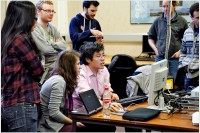
Innovative Learning Week (ILW) 2014 is a week-long programme of exciting and creative events that brings together staff, students and alumni from across the University.
The School of Physics & Astronomy will be offering the following events:
Tuesday 18th
Team Review Presentations
9-5:30pm Room 5215 JCMB. Open to ALL students and staff
SCART Connection: “What is Beauty to a Physicist and Truth to a Silversmith?”
10-12pm, Summerhall. Open to ALL students
Sign up at http://scart.eventbrite.co.uk
Wednesday 19th
Group Project Presentations
9-5:30pm, Room 6301 JCMB. Open to ALL students and staff
Thursday 20th
“Key Basics for Getting Started with LaTeX”
- Introductory Presentation
- Short break for refreshments and doughnuts
- Practical Session with the opportunity to ask questions
11-1pm, Ground floor CP Lab JCMB. Open to ALL students
MUST have Physics CP lab access/login
Orienteering around KB
Prizes for 1st and 2nd place finishes!
3pm starting from JCMB front doors. Open to ALL students
“Weird new worlds around other stars”
ILW Keynote Seminar will be given by Dr Ken Rice and Dr Beth Biller, School of Physics & Astronomy, on the topic of exo-planets, or planets outside our solar system, and the search for potentially inhabitable planets orbiting distance stars. This is particularly topical with the recent discovery of Kepler-78b.
Drinks Reception from 5pm. Keynote Seminar 6-7pm, Lecture Theatre A, JCMB
Open to ALL students and staff of the School of Physics & Astronomy

A new online course which offers people the chance to study the work of Nobel Prize-winning physicist Professor Peter Higgs is being offered.
The free seven-week course, entitled The Discovery of the Higgs boson, launched on Monday, 10 February and has already attracted more than 10,000 learners to register.
The course explores the scientific advancements that have led to the building of the Large Hadron Collider in Switzerland, and to the detection of the boson.
It features interviews with Prof. Higgs and filmed lectures by a team of world-class physicists from the School of Physics & Astronomy, led by Prof. Luigi del Debbio and Dr Christos Leonidopoulos and with support from 10 PhD students acting as teaching assistants. Students can debate what they have seen using dedicated online discussion spaces, as well as social media.
"We are extremely excited to be able to offer to a worldwide audience of online learners a unique insight into the work of Peter Higgs. This course, which describes how Peter's ideas have contributed to our current understanding of the physical phenomena at the smallest scales, is the first Massive Open Online Course (MOOC) to be offered by The University via the FutureLearn platform." Christos Leonidopoulos, Institute for Particle and Nuclear Physics
"We hope that this MOOC will help us share with people from all around the world, and from all walks of life, the excitement of the Higgs discovery, and some of the profound insights it gives us into the inner workings of the universe we live in." Richard Ball, Director of the Higgs Centre
"Professor Higgs’ research has provided us with profound insight into the building blocks of the Universe and this course will allow anyone with a computer and access to the web to take part in the exciting and revolutionary times that we live in." Prof. Arthur Trew, Head of School of Physics and Astronomy
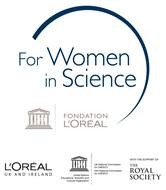
Applications for the L’Oréal-UNESCO UK and Ireland Fellowships For Women In Science open on 1 February 2014.
Four outstanding female post-doctoral scientists in the UK or Ireland will each be granted a fellowship worth £15,000 each, or the equivalent value in Euros for candidates in Ireland.
The Fellowships were launched in 2007 and provide flexible and practical help to female post-doctoral researchers. The winners may choose to spend their fellowship grants in any way that is helpful to them in furthering their research, from buying lab equipment, to hiring an assistant or paying for childcare costs.
The finalists will be selected by a panel of eminent scientists chaired by Prof. Pratibha Gai, including Prof. John Pethica FRS and Prof. Dame Janet Thornton FRS.
Deadline
The closing date for applications is Friday 14th March 2014.
Further information
For further information and to apply, see: www.womeninscience.co.uk
The programme is run in partnership with the UK National Commission for UNESCO and the Irish National Commission for UNESCO, with the support of the Royal Society.
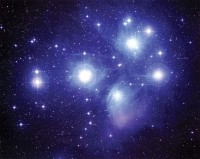
The School of Physics & Astronomy seeks to appoint Chancellor's Fellows. These 5-year Fellowships are intended to support outstanding candidates at the start of their independent academic careers. The areas of strategic importance for this round are:
- Big Data
- Soft Condensed Matter
- Nuclear Physics
Who should apply?
We are looking for highly talented academics who will contribute to our continued achievement of excellence in research. Colleagues addressing data-intensive research are encouraged. You will already be working in an independent research capacity and will be developing your reputation for high quality research.
Chancellor’s Fellows also make an important contribution to enriching student learning experiences through their research, teaching and personal tutoring. You will concentrate on research initially, but will be trained in teaching skills and progressively take up this core academic activity.
We are particularly keen to encourage applications from candidates proposing interdisciplinary research.
How to apply
Applications containing a detailed CV and a 1-page outline of a proposed research programme indicating which strategic priority area you are interested in, should be made by applying to one or more of the available vacancies by 5pm GMT on 28th February 2014. Applications should be made via the University of Edinburgh's recruitment website.
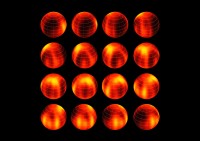
Researchers have mapped the surface of a brown dwarf – an object larger than a planet and smaller than a star – for the first time.
Scientists say the methods used in their study could eventually be applied to examine small, cool planets in other solar systems.
The team of European scientists carried out a pair of studies to analyse the atmosphere of the nearest brown dwarf to Earth, known as Luhman 16B, some 6.5 light years from the sun.
Researchers found that Luhman 16B has a complex structure of patchy clouds made up of droplets of liquid iron and other minerals, with temperatures in the clouds exceeding 1000°C.
Novel techniques
The brown dwarf is too far away for direct images of its surface to be captured, so the team applied a number of novel techniques using two telescopes in Chile to analyse its atmosphere. As Luhman 16B rotates, bright and dark clouds move in and out of view and its brightness changes.
In one study, led by the University of Edinburgh and published in Astrophysical Journal Letters, the team observed changes in the brown dwarf’s brightness and were able to reconstruct what happens in different layers of its atmosphere.
In a second study, led by the Max Planck Institute for Astronomy in Germany and published in Nature, the team used an indirect imaging technique to directly map out a layer of clouds.
“We are excited by what we have been able to see in these studies, but this is only the start. With new generations of telescopes, such as the forthcoming European Extremely Large Telescope, astronomers will likely see surface maps of more distant brown dwarfs – and eventually, surface maps for young giant planets.” Dr Beth Biller, now Institute for Astronomy, who led the second study.
Video
Zooming in on the nearby brown dwarf Luhman 16B
Flying among the closest stars to the Solar System
Image gallery

Interested in a new postgraduate opportunity in Astrobiology? We'd like to hear your views.
The School of Physics & Astronomy is considering launching a new postgraduate opportunity in Astrobiology.
We have set up a short survey and would be delighted to hear from anyone interested in postgraduate study in Astrobiology.
Your feedback could help shape the content and structure of this new programme, and there is an opportunity to leave your contact details so we can keep you up-to-date on any developments.
The survey

We are delighted to announce that the School of Physics & Astronomy has been recognised by the Institute of Physics (IOP) for its actions to address gender inequities across its student and staff body.
In awarding the prestigious Juno Champion status to the School, the IOP highlighted the clear and strong commitment of senior management to equality and diversity in the workplace, and particularly applauded the School’s progress in redressing historical gender imbalances in university physics.
“The Juno process gives us a wonderful opportunity to stand back and look at the changes we've made over the past 10 years, and celebrate the improvements that make the School a great place to work and study." Prof. Cait MacPhee, Institute for Condensed Matter and Complex Systems
"This award reflects the widespread desire within the School to ensure that in our pursuit of excellence we enable all to flourish. I am really pleased by the steps that we have taken and the commitment that everyone has shown to win us this prestigious award.” Prof. Arthur Trew, Head of School
To achieve the new status, we demonstrated progression against a range of Juno principles set up to improve the working culture. This is reflected in, for example, a high degree of overall satisfaction with the workplace, as expressed by staff members at all grades. Moreover, in contrast to national trends, there is no evidence for a “leaky pipeline” of women from the School as they progress from undergraduate through postgraduate to postdoctoral level. The award also celebrates the 5-fold increase in the proportion of female staff, and our increased levels of support for early career researchers, since we began the Juno journey in 2004.
The School of Physics & Astronomy joins a growing list of eight other physics departments named Juno Champions in the UK and Ireland, and is the second such award made to a Scottish Physics department.
The School’s Juno committee comprised Richard Blythe, Toni Collis, Ashley Cooke, Robyn Donnelly, Louise Ferguson, Cait MacPhee, Gill Maddy, Salomé Matos, John Peacock and Kate Slaughter.
Juno Code of Practice and level of engagement
The IOP's Code of Practice was developed in response to a recommendation of the International Perceptions of UK Research in Physics and Astronomy report that a special focus to attract and retain women in physics is needed.
The Code is based on best practice identified from IOP's "Women in University Physics departments: A Site Visit Scheme", which ran from 2003 to 2005. It sets out practical ideas for actions that departments can take to address the underrepresentation of women in university physics and emphasises the need for dialogue, transparency and openness.
There are three levels of engagement with the Code:
- As a Supporter, physics departments endorse the five principles set out in the Code of Practice.
- Practitioner status requires the department to demonstrate that its Juno journey is well underway and an initial evidence-based action plan demonstrating how the department aims to achieve Champion status is created.
- As a Champion, physics departments are confirmed to have met the five principles set out.
There are now 9 Champion departments, 13 Practitioners and 24 Supporters.

